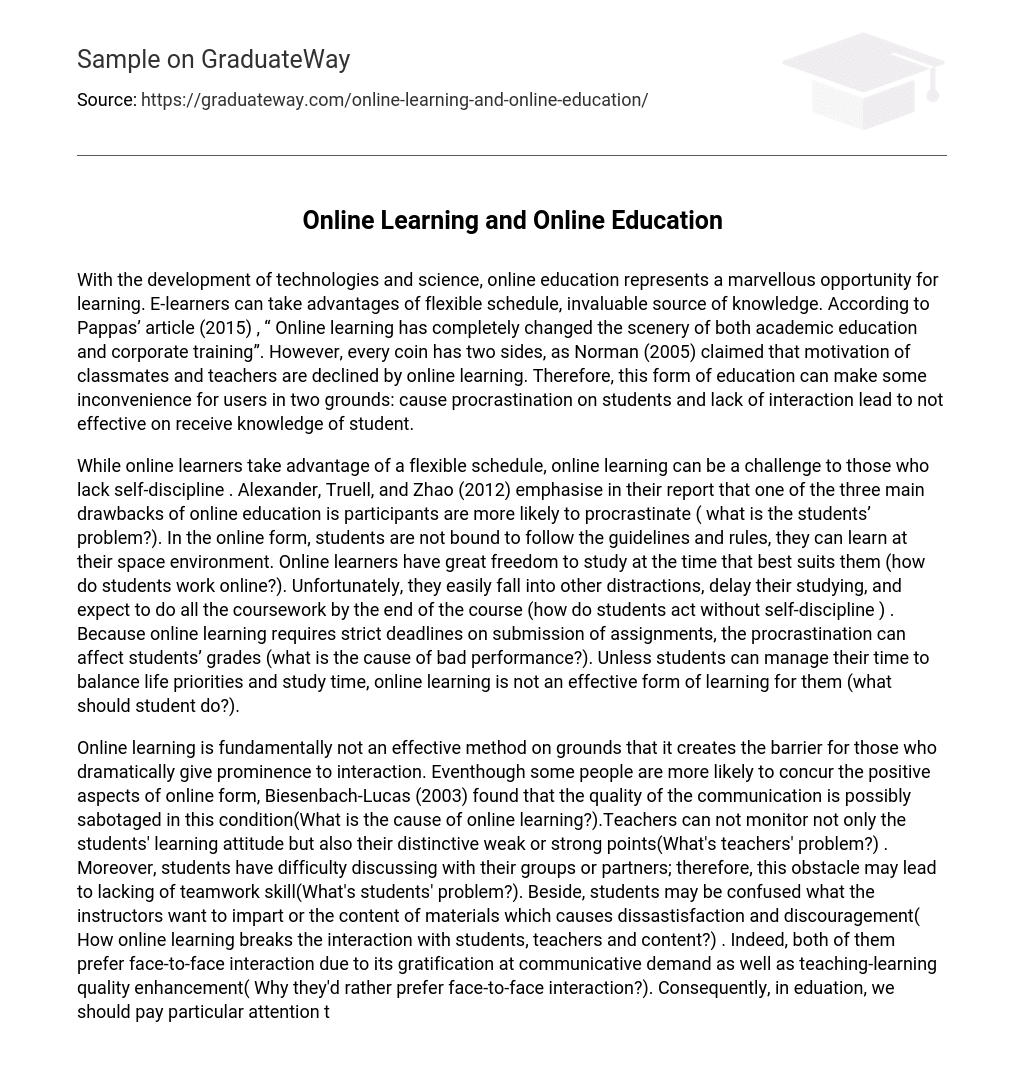With the development of technologies and science, online education represents a marvellous opportunity for learning. E-learners can take advantages of flexible schedule, invaluable source of knowledge. According to Pappas’ article (2015) , “ Online learning has completely changed the scenery of both academic education and corporate training”. However, every coin has two sides, as Norman (2005) claimed that motivation of classmates and teachers are declined by online learning. Therefore, this form of education can make some inconvenience for users in two grounds: cause procrastination on students and lack of interaction lead to not effective on receive knowledge of student.
While online learners take advantage of a flexible schedule, online learning can be a challenge to those who lack self-discipline . Alexander, Truell, and Zhao (2012) emphasise in their report that one of the three main drawbacks of online education is participants are more likely to procrastinate ( what is the students’ problem?). In the online form, students are not bound to follow the guidelines and rules, they can learn at their space environment. Online learners have great freedom to study at the time that best suits them (how do students work online?). Unfortunately, they easily fall into other distractions, delay their studying, and expect to do all the coursework by the end of the course (how do students act without self-discipline ) . Because online learning requires strict deadlines on submission of assignments, the procrastination can affect students’ grades (what is the cause of bad performance?). Unless students can manage their time to balance life priorities and study time, online learning is not an effective form of learning for them (what should student do?).
Online learning is fundamentally not an effective method on grounds that it creates the barrier for those who dramatically give prominence to interaction. Eventhough some people are more likely to concur the positive aspects of online form, Biesenbach-Lucas (2003) found that the quality of the communication is possibly sabotaged in this condition(What is the cause of online learning?).Teachers can not monitor not only the students’ learning attitude but also their distinctive weak or strong points(What’s teachers’ problem?) . Moreover, students have difficulty discussing with their groups or partners; therefore, this obstacle may lead to lacking of teamwork skill(What’s students’ problem?). Beside, students may be confused what the instructors want to impart or the content of materials which causes dissastisfaction and discouragement( How online learning breaks the interaction with students, teachers and content?) . Indeed, both of them prefer face-to-face interaction due to its gratification at communicative demand as well as teaching-learning quality enhancement( Why they’d rather prefer face-to-face interaction?). Consequently, in eduation, we should pay particular attention to learning form that encourage meaningful, pliable and vivid interactivity with learners, instructors, and content(What should we do?).
All in all, online learning has not only advantages but also various drawbacks. Online leaning is possibility of distractions and lack of face-to-face interactions. Online learning can be an acceptable way to get knowledge, but it is not convenient for everyone. Therefore, online learning should not completely replace the traditional classes.





